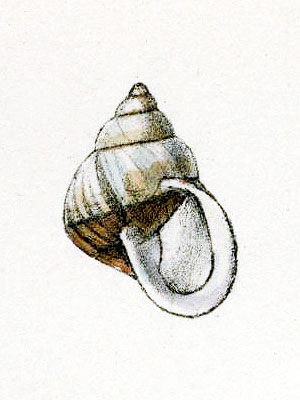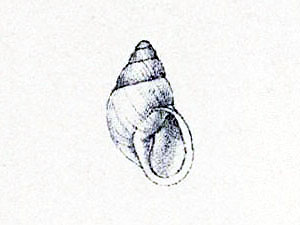Infated Samoana Snail (Samoana inflata)
The Inflated Samoana Snail was described in 1842, it was endemic to the island of Tahuata in the Marquesas.
This arboreal species inhabited the native forests at elevations of about 400 to 500 m above sea level, where it was commonly found on trees. [1]
***
The Inflated Samoana Snail is now considered extinct.
*********************
References:
[1] Justin Gerlach: Icons of Evolution: Pacific Island Tree-Snails of the Family Partulidae. Phelsuma Press 2016
*********************

(public domain)
*********************
edited: 04.06.2021

